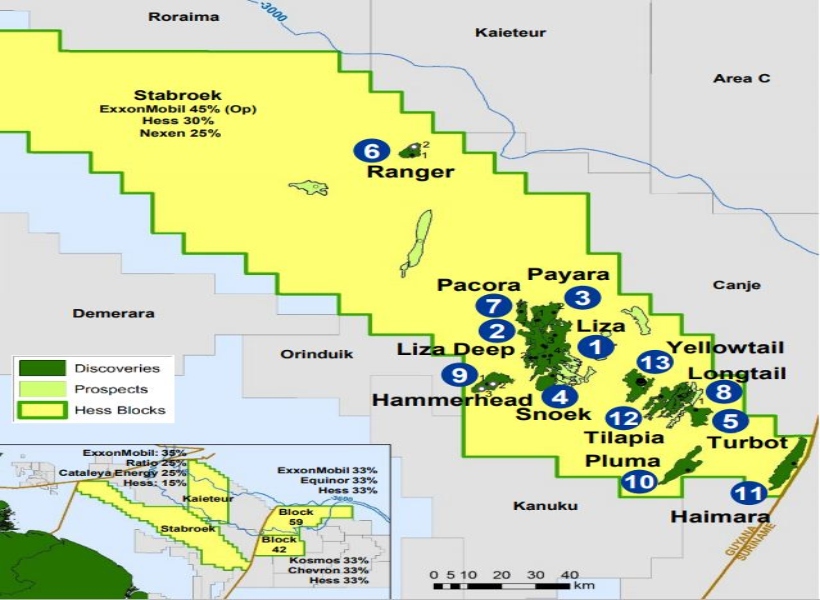ExxonMobil’s subsidiary, Esso Exploration and Production Guyana Limited (EEPGL), has informed the Environmental Protection Agency (EPA) that it will conduct an assessment to determine the cumulative impacts of having four oil projects work simultaneously on the Stabroek Block.
This was noted in the project details it recently submitted to the regulatory body on the Hammerhead Development Project. That venture would see close to 190,000 barrels of oil being produced at peak period. Once all approvals are granted, ExxonMobil said it expects to have the Hammerhead Project up and running by mid-2024.
By 2025, ExxonMobil hopes to have Hammerhead, as well as its three other projects, being Liza Phase One, Liza Phase Two and Payara, producing 750,000 barrels of oil.
While an Environmental Impact Assessment (EIA) is still to be done, EEPGL said that Hammerhead is expected to have effects on the environment that are similar to those which are noted in the EIAs for Liza Phase One, Liza Phase Two and Payara. The EIAs for those projects note that there would be impacts on the quality of the air; changes in quality of ocean water; impacts to whales, dolphins, sea turtles, marine birds and marine protected species, coastal wildlife, and coastal habitat; changes in food source for fish and wildlife; and in the event of an oil spill, impacts on marine water, coastline, protected areas, indigenous communities, and the livelihoods of farmers and fishermen.
Considering the similarities in impact, EEPGL said that a robust cumulative impact assessment will be performed.













